HELL CURVING: A Kickturn of Hope
(La Curva De La Muerte. Un giro de esperanza.)
A book and documentary project by Jose Noro and Dani Santos about how them and their crew came up with the idea for the first DIY skatepark in Barcelona, that existed from 2002-2014 and about its construction, through to the endless sessions and parties. This is the story of how a group of friends got together to change things and ended up creating one of Barcelona’s quintessential spots.
Directed, Filmed and Edited by Modularestudio / Pedro Márquez and David Triviño released through Carhartt WIP.
9 Borough … Canyelles …
The late 80’s is when I first stepped into that hood, we climbed into an abandoned psychiatric hospital where some locals had built a curb on an inclined plane.
Unbelievably, Barcelona wasn’t always the street skating paradise that it’s known as today, or a ramp paradise for that matter, because there weren’t any. The ramps that existed were either torn down or were total shit, and still are.
As kids, we learned how to build our own obstacles to skate on. We learned these skills early (unfortunately by necessity), but we liked it, we passed the time doing it, and we were more motivated for it.
It was in 1992 during the Olympic Games when the city decided to make a series of skateparks to shut people up who were impacted by the large event, and one of them was given to us, and it’s the reason why I’m writing this today: The Guineueta skatepark.
Rough, tough, pure and rugged concrete and low quality sandblasted with one foot transitions and one meter of vert, and that is where I learned to skate and break half the bones and ligaments in my body.
Years passed and the popele I used to hang out with stopped skating. The skatepark became an area for crime, drugs, and vandalism, so I decided to stop going and started frequenting the other skate park in upper Barcelona, Turó Park. Here we gathered and called ourselves, jokingly, The Last Skaters. We could count ourselves on ten fingers and half of us weren’t from Barcelona, but from the surrounding towns. A few years went by and I started traveling to the USA to seek the skateboarding I had always dreamed of: real pools and skateparks.
Each time I came back more motivated to do something here in my local skatepark like what I had seen there, linking ramps together, putting in pool coping… built all on our own. Unfortunately, since the city of Barcelona never supported this “sport” but instead, wanted to eradicate it, they continued giving us astronomical fines. We always had to maintain the skatepark on our own; plug holes, paint, etc., all out of our pocket.
A few local skaters with the help of the Kasal de Roketes, a local squat, organized a skate association (the only way of making their voices heard), but the meetings were absurd and only caused trouble, and people got tired of fighting and getting nothing done, so the members came and went.
During a trip to the USA, a few Spanish skaters who were eager to make some noise decided to take control of the association with all of the energy and motivation needed to undertake this large project (the nightmare of the last two years) with enthusiasm and strength.
That’s when the project started to close the bowl and to build a snake ramp along with a few more modules. But the project was dropped because the city only allowed 10% of it to be done, hardly finishing it, as they tried once again to throw the project away or at the very least paralyze it. So it ended up being just the curve with the pool coping, which is now known as the Curve of Death or Hell Curving.
It was very hard work. Just three people working on it after already enduring long hours at day jobs, without work permits, outside help of any kind, and sometimes even without tools.
We had the will and that’s what pushed us forward. There were many times, because of interferences by the city council, that we almost stopped and gave up, but pride, strength, and our internal struggles made it possible that after twelve years, that piece of concrete hope still remains, something we built then because we needed a decent place to skate, and as a symbol of protest against a city that discriminated and labeled us delinquents, and still does to this day.
To celebrate the opening we decided to throw a party that was supported by a few of the sponsors of that era. We wanted to do something different; a party for all people, regardless of whether or not you were a skater; a neighborhood celebration, a gathering of people from the hood (or from anywhere), who wanted to celebrate our little work of art with us; without competition, but instead combining some free beer and barbeque with some local rock n’ roll from our friends’ bands, who were also down to join the party.
At that time in the city there wasn’t a lot of leeway for playing music or throwing parties, so during those years our spot acted as a meeting place for all kinds of people from different parts of Barcelona, who took note from our parties of what it meant to do whatever the blood in your veins tells you to do, this for us was to combine what we loved: skateboarding and rock n’ roll.
Since childhood I was taught to do everything by myself, to not depend on anyone or wait to receive help, just to rely solely on my own effort, struggle, and sweat, and I think everyone who embarked on this struggle of an adventure shared the same philosophy. That’s what helped us push forward in the end, and I personally am very proud of being able to make this dream a reality. – Jose Noro
A few bonus photos from 2006 that didn’t make it into the book. All photos by Jonathan Hay
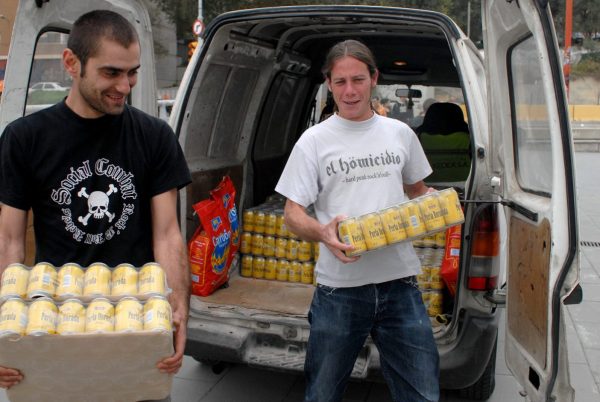
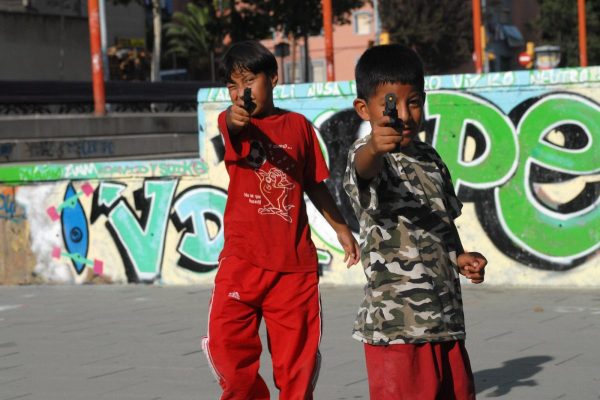
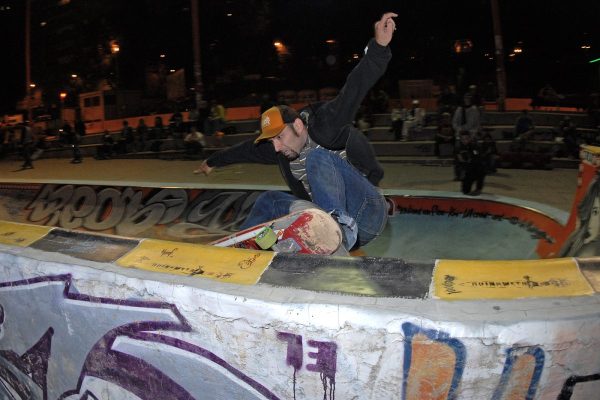
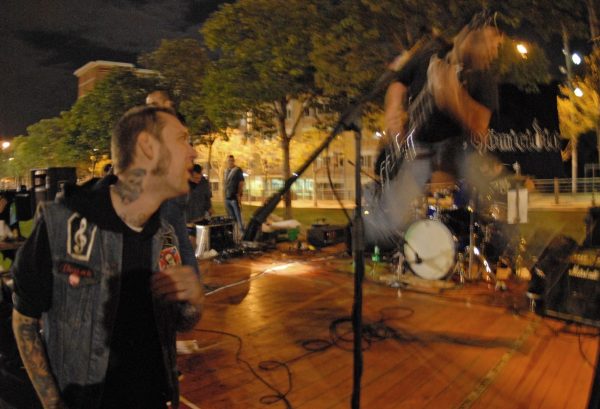


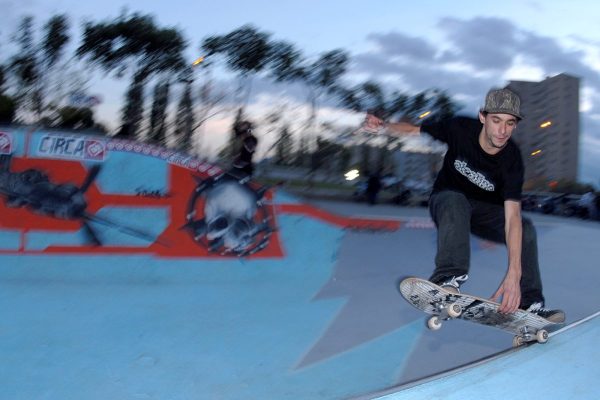
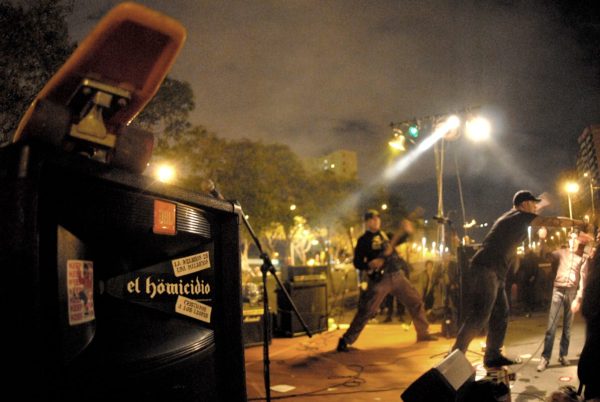

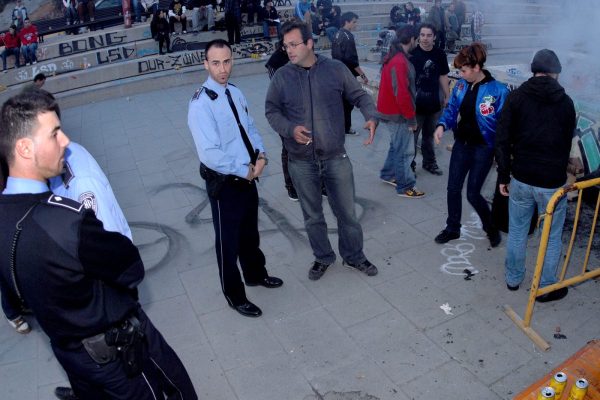
– the end –
